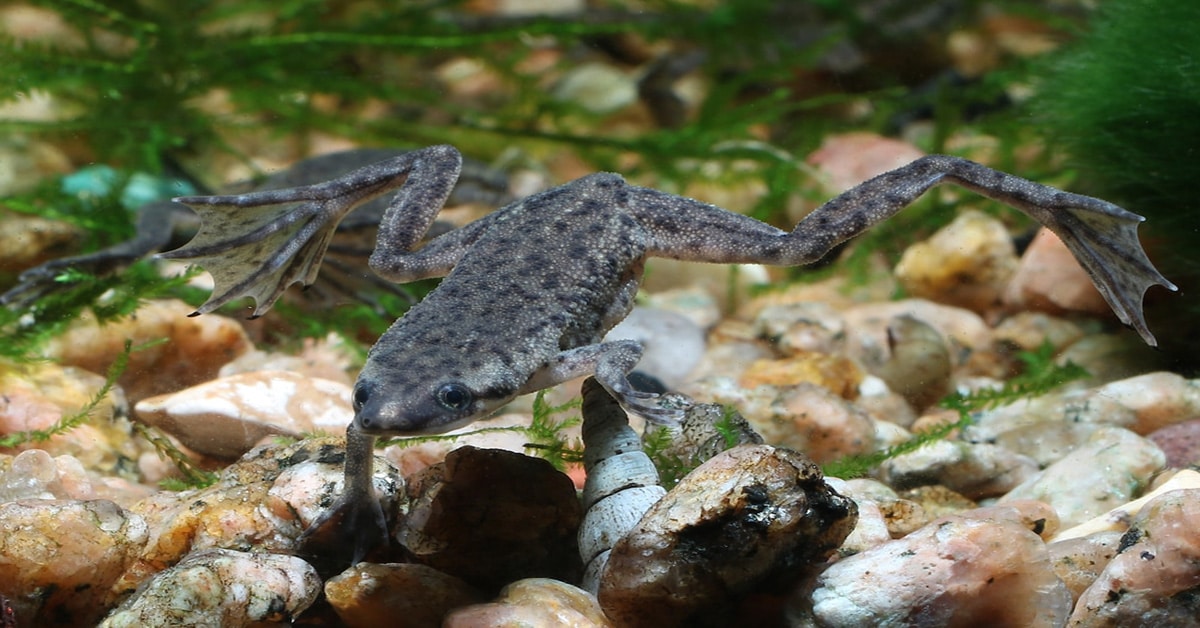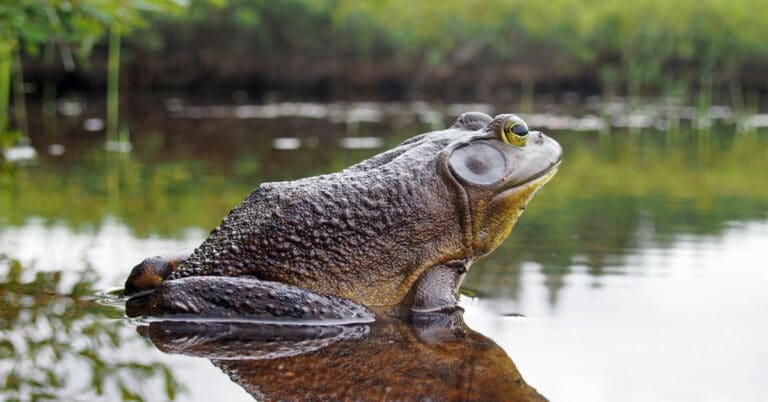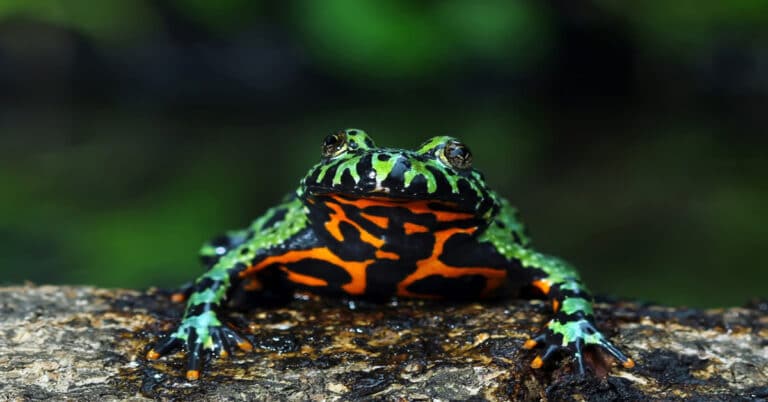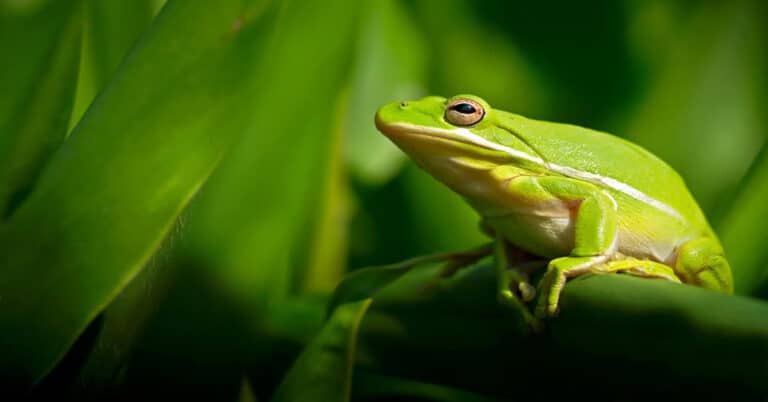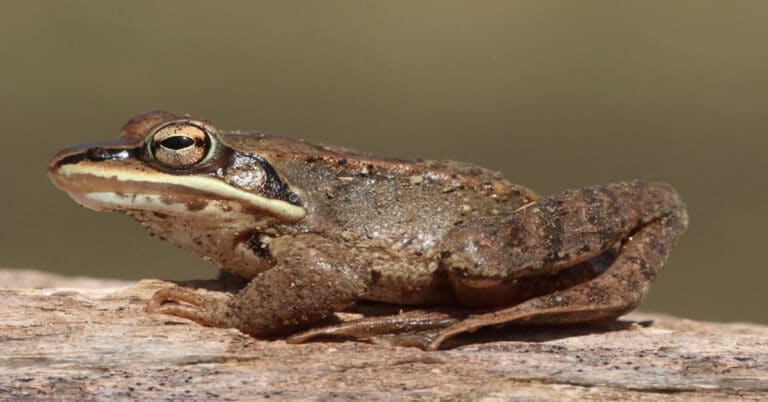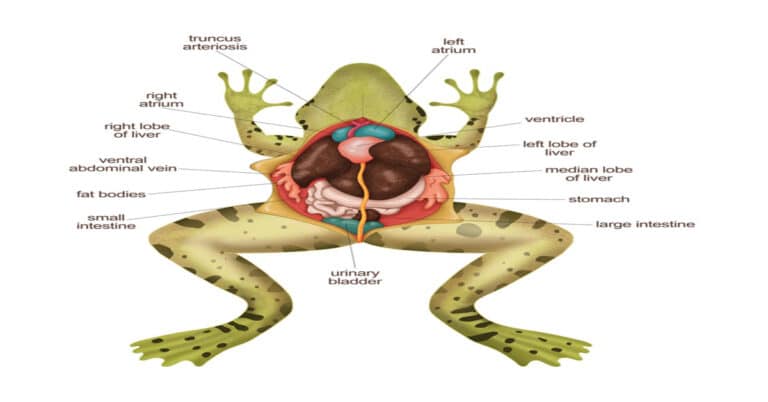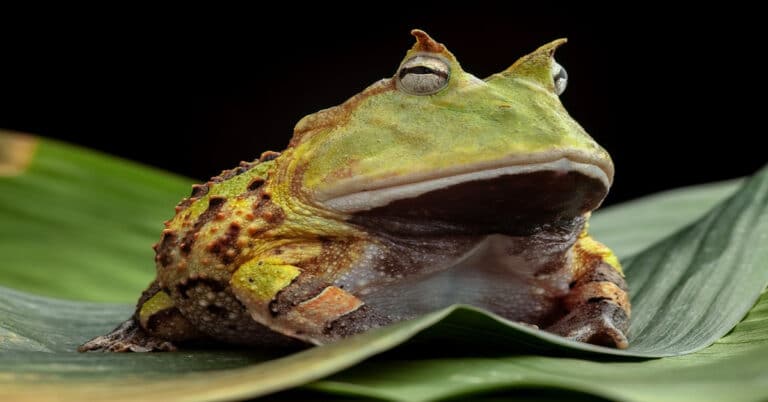Dwarf Frogs
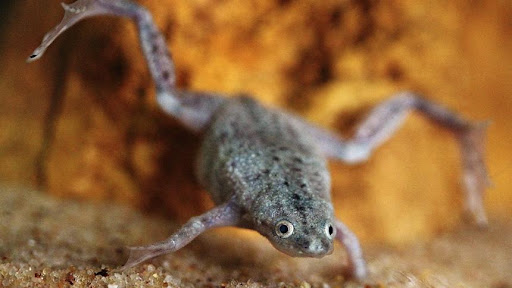
Dwarf frogs are native to central Africa and live their entire life underwater. These amphibian frogs are fully aquatic, and you can even keep them with pet fish. It’s no wonder they are a popular choice as aquarium pets. Dwarf frogs come in a range of colors, but two of the common ones are brownish-green and olive. Although they spend their entire life underwater, they come near the surface to get air once in a while.
The specie of frogs is similar to that of African clawed frogs, but dwarf frogs are less aggressive and smaller. This specie of frog can only grow as long as 2.5 inches, and their life expectancy is just under 5 years. However, some of them can live longer with in-house care as pets. Since dwarf frogs are social animals, it is best to keep them in a group or a pair.
At maximum, the frog water aquarium should hold between 4-8 litres of water which comes down to 1-2 gallons. It gives the frog more room and freedom to swim around while also making it easier for you to manage the water inside the tank. However, it’s important that you’re careful since a small amount of water can get dirty easily. Not having enough water in the tank may result in the spread of germs and other diseases.
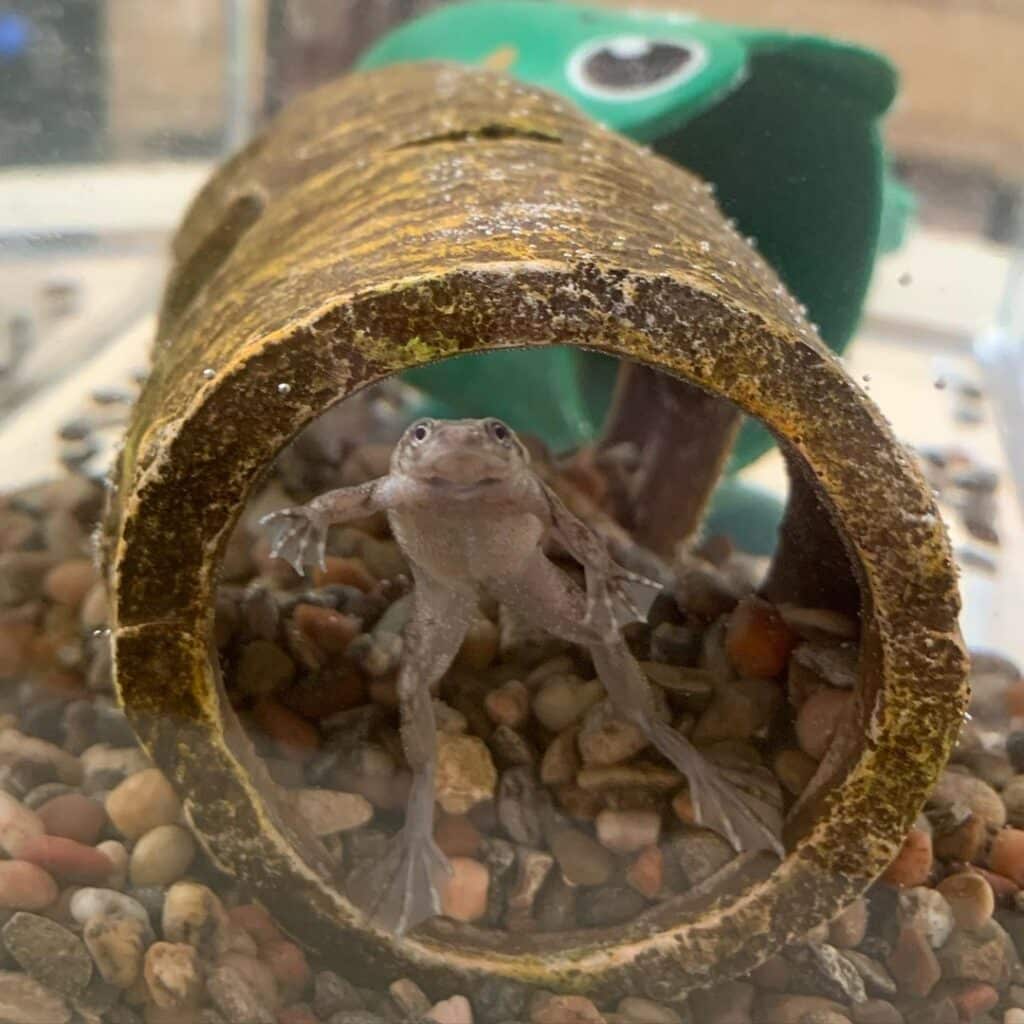
African Dwarf Frogs as Pets
Despite their aquatic nature, these frogs are not good swimmers. Therefore, they should not be kept inside deep aquariums or water for too long. Another thing which is important to keep in mind is that the water shouldn’t have a heavy current. That’s because it can greatly hinder their swimming ability.
Moreover, you shouldn’t take them out of water since they struggle to survive in dry conditions. These frogs aren’t aggressive eaters, so you need to stick to a feeding schedule to avoid overfeeding. Another important point is that the owner should not put them together with wild fishes.
Advantages of Keeping Dwarf Frogs as Pets
There are numerous advantages that an owner can reap by keeping this specie as a pet. One major advantage is that they are easy to keep and do not require a lot of money to maintain their lifestyle and health.
Keeping these frogs as pets is entertaining since they are active and like to play around. Moreover, they also require small space to live, so you needn’t invest heavily in an aquarium.
Disadvantages of Keeping Dwarf as Pets
Like most amphibians, these frogs carry the bacterium known as “salmonella.” This can be life-threatening and may put the entire household at risk of bad health. It especially puts elderly family members and children at risk. Therefore, plenty of precautions is required.
Moreover, it’s also hard to identify which frog is carrying salmonella without getting them tested. You should also remember that commercial stores selling these frogs do not look after their needs. Adopting a dwarf frog with a lack of care and a history of neglect can cause it to die relatively quicker.
African Dwarf Frogs Life in the Wild
In the wild, frogs are usually found in rivers and creeks. Sometimes, they find solace in the pond during the dry season. These frogs prefer to live near their food source and around mud and leaf litter to save themselves from predators. These frogs also lack good eyesight and need to rely on their sense of smell and the vibrations of water.
In the wild, their delicate bodies do not work in their favour since they easily suffer from injuries. Despite being carnivorous in nature, they don’t have teeth or a tongue. They have a life expectancy of fewer than five years in the wild, but when kept as pets, they can live as long as ten years.
The Difference between an African Dwarf Frog and African Clawed Frog
Sometimes, African dwarf frogs are confused with African clawed frogs. It happens because they both have claws on their feet and also appear similar. But it is important not to make this mistake. When it comes to overall ability and features, both are miles apart. Clawed frogs can kill fishes larger than themselves and are known as vicious predators.
Their claws can easily rip fishes, and they even prey on other species of frogs. And if you dare keep one with pet fish in an aquarium, the results will be dangerous. It is clear that these frogs cannot co-exist with other species.
However, dwarf frogs are very calm in nature and do not attack unless provoked. When it comes to characters, these two are of contrasting nature.
Behaviour
Overall, these frogs are calm and shy when approached. You may mistake them for being gentle and kind, but that is part truth. They are still predators, after all. They might try to eat anything that can fit inside their mouth. Mostly, they are nocturnal and will sleep most of the time. It can be up to 12 hours, which is almost half of the day.
Mating
Dwarf frogs often reach sexual maturity within nine months. Their mating method is known as Amplexus, where a male clasps the female above her rear legs around the abdomen as she swims. The reproduction process may take up to 2 days to complete, but it usually takes a single night.
Breeding
A female often lays 150-170 eggs at different intervals. The hatching relies heavily on the environment and temperature. The eggs do not hatch if the temperature does not reach below 22 degrees. Similar to other species of frogs, they become tadpoles first before developing limbs and other parts of their bodies.
Final Thoughts
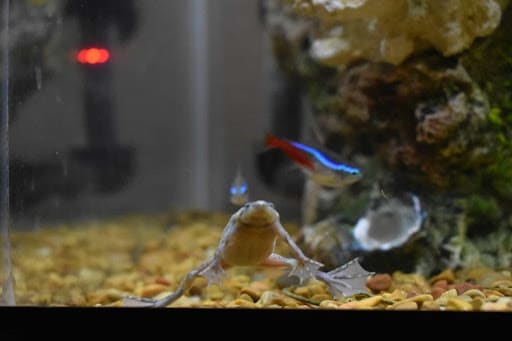
Dwarf frogs are often thought to be ideal pets. However, if owners are considering it to put with other fishes, they need to be selective and only choose species that can co-exist. Moreover, adequate care should be taken for salmonella. We hope you learned plenty of things from this article about dwarf frogs.
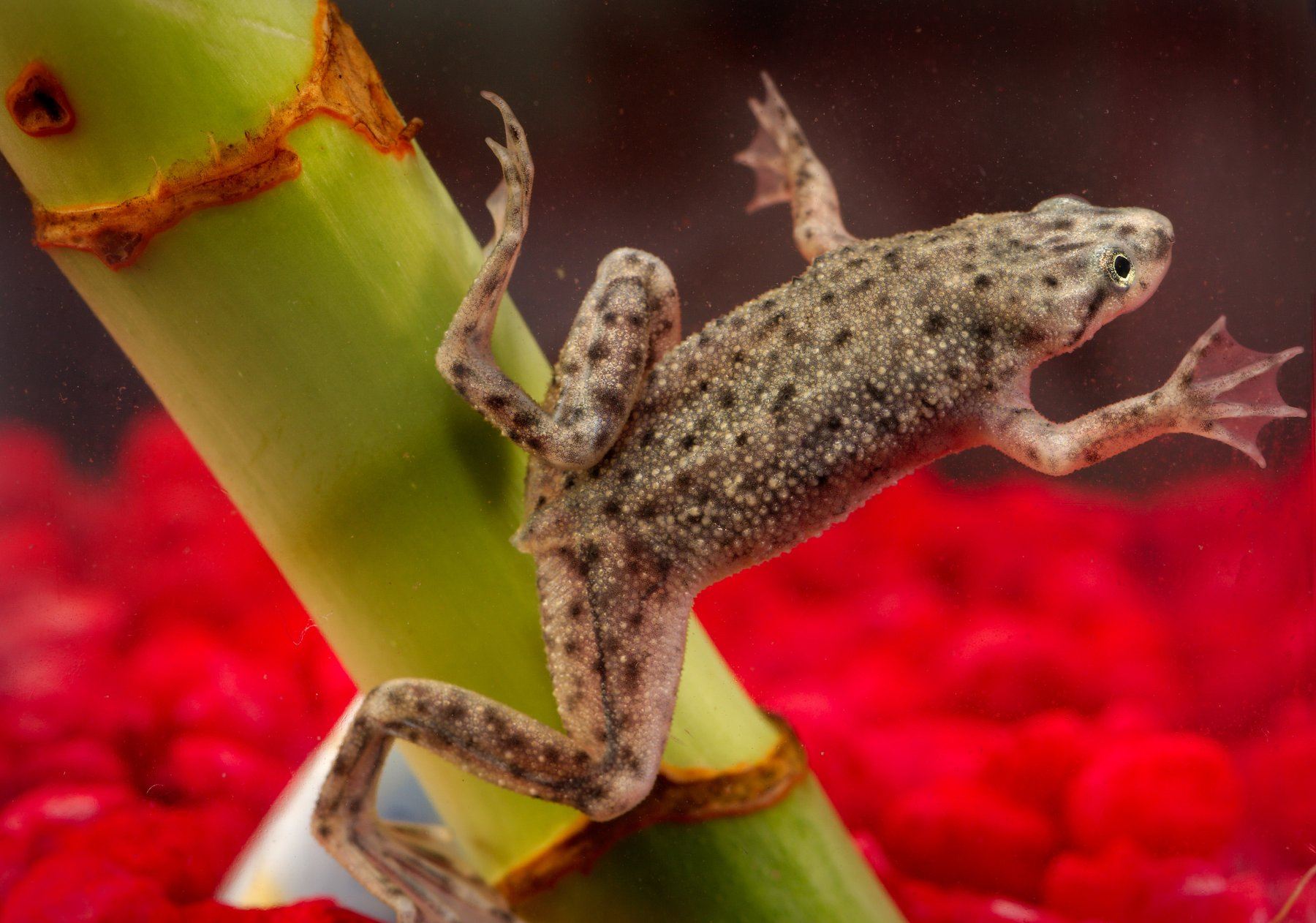
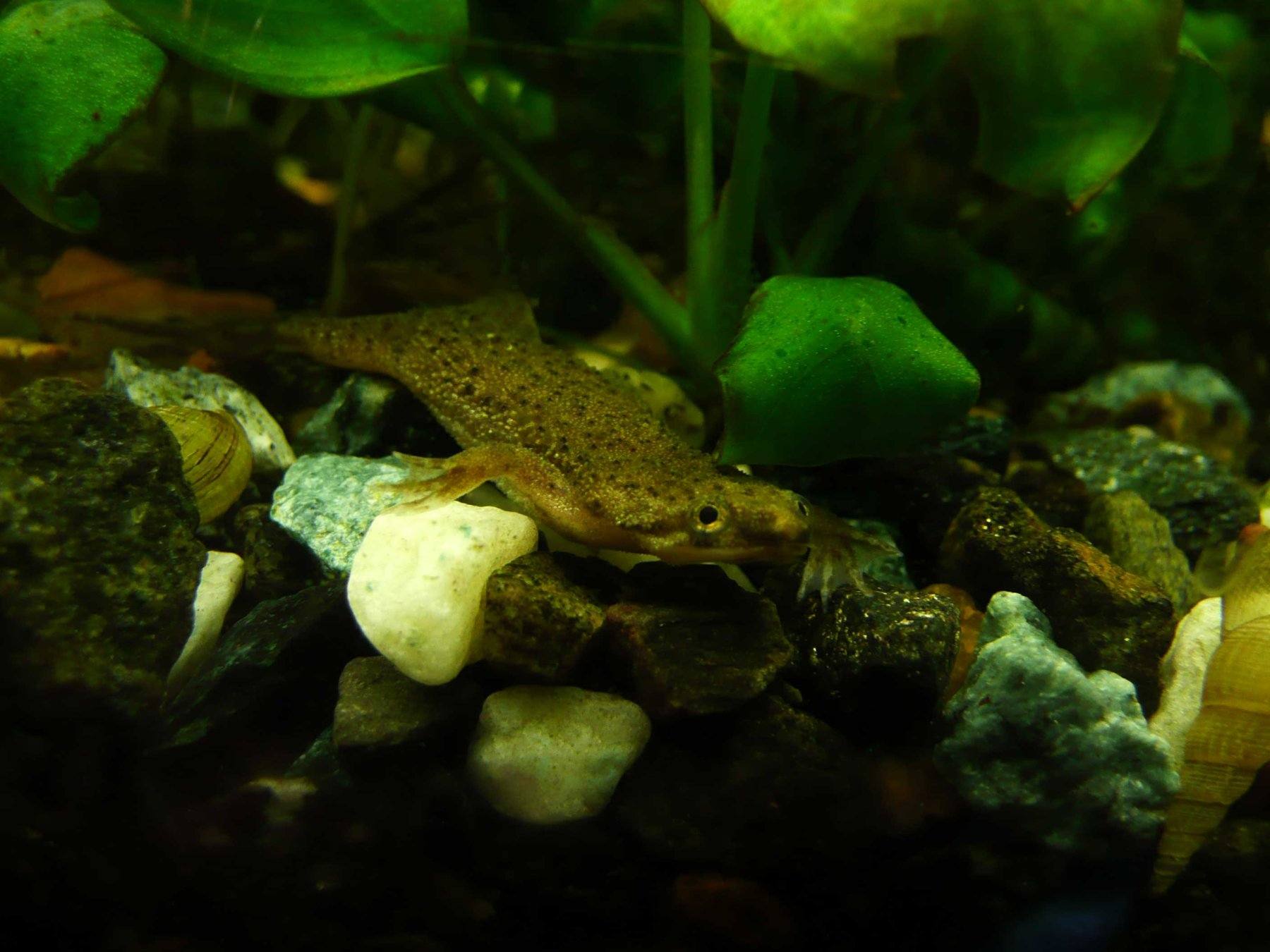
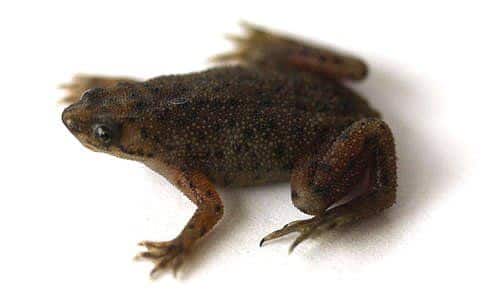
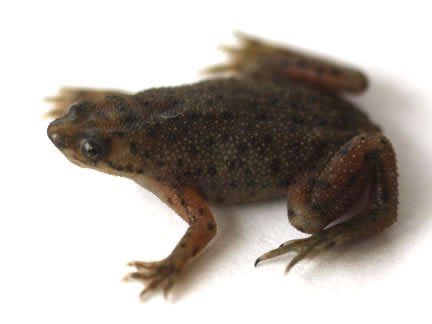
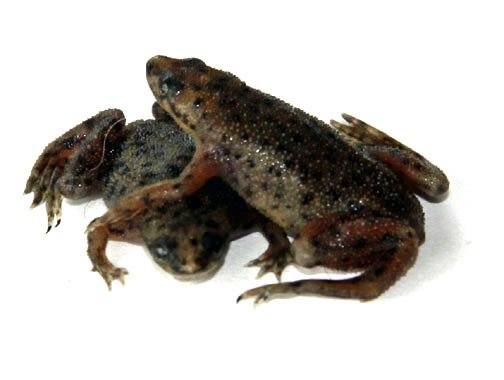
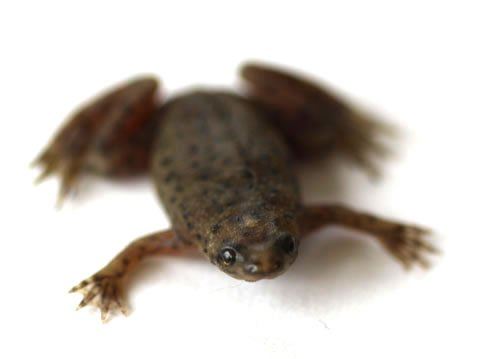
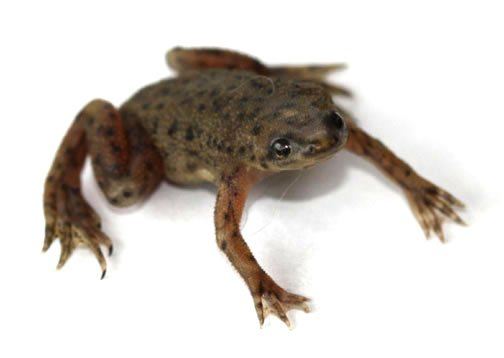
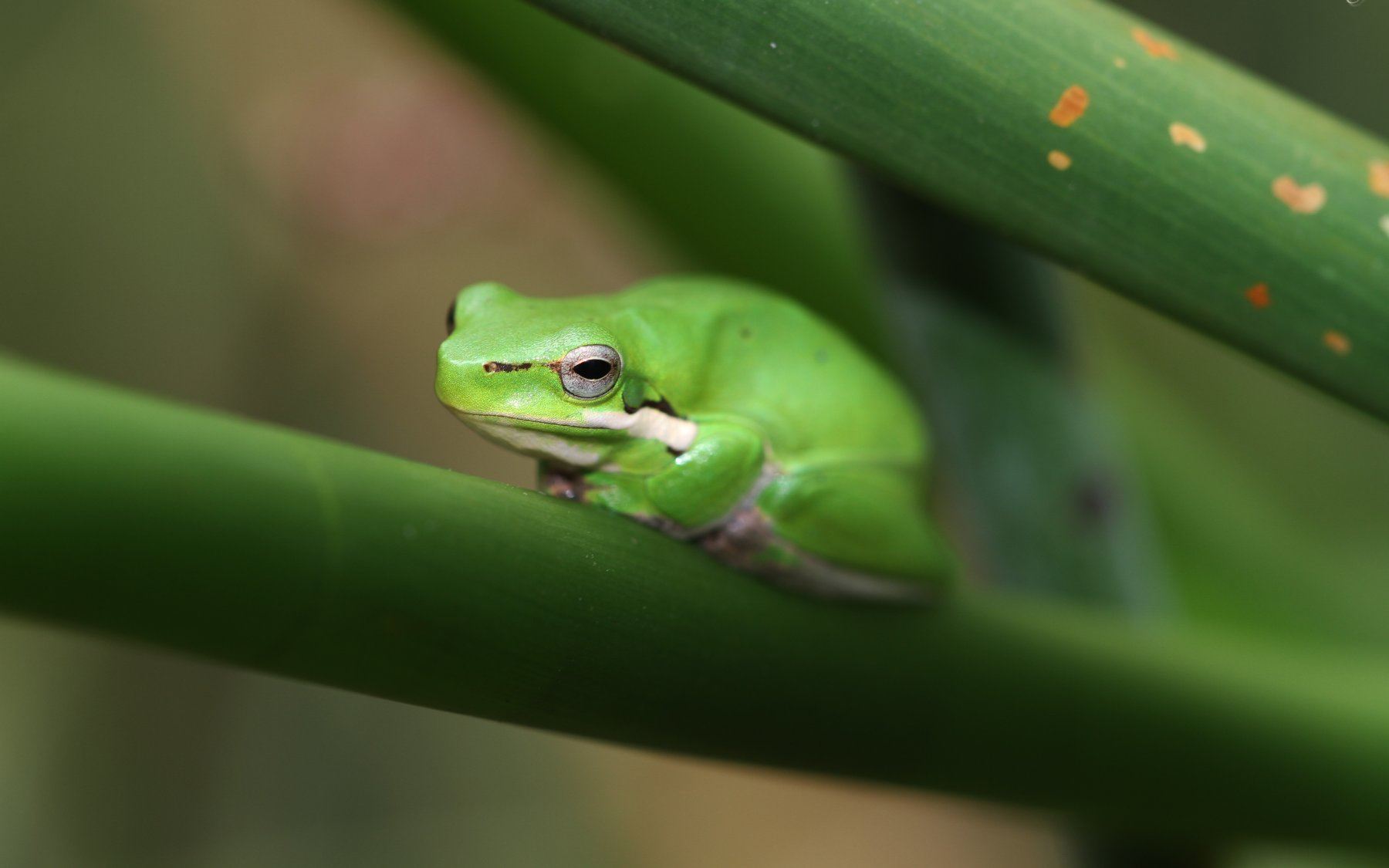

Having discovered a fondness for insects while pursuing her degree in Biology, Randi Jones was quite bugged to know that people usually dismissed these little creatures as “creepy-crawlies”.

